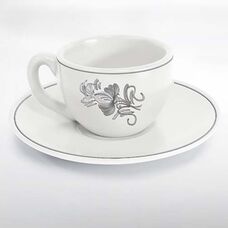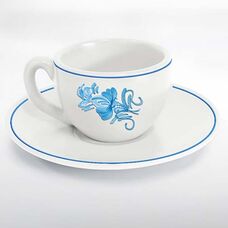Exclusive porcelain underglaze Paints for Pottery houses and Ceramic products
BLACK - Underglaze Paint Pottery Color Black Porcelain Paint
Black by Johnson Matthey may be brushed on wet clay, greenware, or on bisque. Underglaze color is suitable for a variety..
1.39€
BLUE - Underglaze Paint Pottery Color Johnson Matthey
Blue by Johnson Matthey may be brushed on wet clay, greenware, or on bisque. Underglaze color is suitable for a variety ..
1.39€
BROWN - Underglaze Paint Pottery Color Johnson Matthey
Brown by Johnson Matthey may be brushed on wet clay, greenware, or on bisque. Underglaze color is suitable for a variety..
1.39€
COPPER-BROWN - Underglaze Paint Pottery Color Johnson Matthey
Copper-Brown by Johnson Matthey may be brushed on wet clay, greenware, or on bisque. Underglaze color is suitable for a ..
1.25€
DARK BLUE - Underglaze Paint Pottery Color Johnson Matthey
Dark Blue by Johnson Matthey may be brushed on wet clay, greenware, or on bisque. Underglaze color is suitable for a var..
1.29€
DARK BROWN - Underglaze Paint Pottery Color Johnson Matthey
Dark Brown by Johnson Matthey may be brushed on wet clay, greenware, or on bisque. Underglaze color is suitable for a va..
1.25€
DARK GREEN - Underglaze Paint Pottery Color Johnson Matthey
Dark Green by Johnson Matthey may be brushed on wet clay, greenware, or on bisque. Underglaze color is suitable for a va..
1.35€
DARK ORANGE - Underglaze Paint Pottery Color Johnson Matthey
Orange by Johnson Matthey may be brushed on wet clay, greenware, or on bisque. Underglaze color is suitable for a variet..
1.39€
DARK ROSA - Underglaze Paint Pottery Color Johnson Matthey
Dark Rosa by Johnson Matthey may be brushed on wet clay, greenware, or on bisque. Underglaze color is suitable for a var..
1.36€
GOLD-YELLOW - Underglaze Paint Pottery Color Johnson Matthey
Yellow by Johnson Matthey may be brushed on wet clay, greenware, or on bisque. Underglaze color is suitable for a variet..
1.25€
GREEN - Underglaze Paint Pottery Color Johnson Matthey
Green by Johnson Matthey may be brushed on wet clay, greenware, or on bisque. Underglaze color is suitable for a variety..
1.99€
GREY - Underglaze Paint Pottery Color Johnson Matthey
Grey by Johnson Matthey may be brushed on wet clay, greenware, or on bisque. Underglaze color is suitable for a variety ..
1.25€
LEMON YELLOW - Underglaze Paint Pottery Color Johnson Matthey
Yellow by Johnson Matthey may be brushed on wet clay, greenware, or on bisque. Underglaze color is suitable for a variet..
1.39€
LIGHT BLUE - Underglaze Paint Pottery Color Johnson Matthey
Light Blue by Johnson Matthey may be brushed on wet clay, greenware, or on bisque. Underglaze color is suitable for a va..
1.25€
ORANGE - Underglaze Paint Pottery Color Johnson Matthey
Orange by Johnson Matthey may be brushed on wet clay, greenware, or on bisque. Underglaze color is suitable for a variet..
1.25€
PINK - Underglaze Paint Pottery Pink Pottery Color
Pink by Johnson Matthey may be brushed on wet clay, greenware, or on bisque. Underglaze color is suitable for a variety ..
1.35€
RED - Underglaze Paint Pottery Color Johnson Matthey
Underglaze red by Johnson Matthey may be brushed on wet clay, greenware, or on bisque. Underglaze color is suitable..
1.39€
RESEDA - Underglaze Paint Pottery Color Johnson Matthey
Reseda by Johnson Matthey may be brushed on wet clay, greenware, or on bisque. Underglaze color is suitable for a variet..
1.29€
WHITE - Underglaze Paint Pottery Color Johnson Matthey
White by Johnson Matthey may be brushed on wet clay, greenware, or on bisque. Underglaze color is suitable for a variety..
1.39€




















